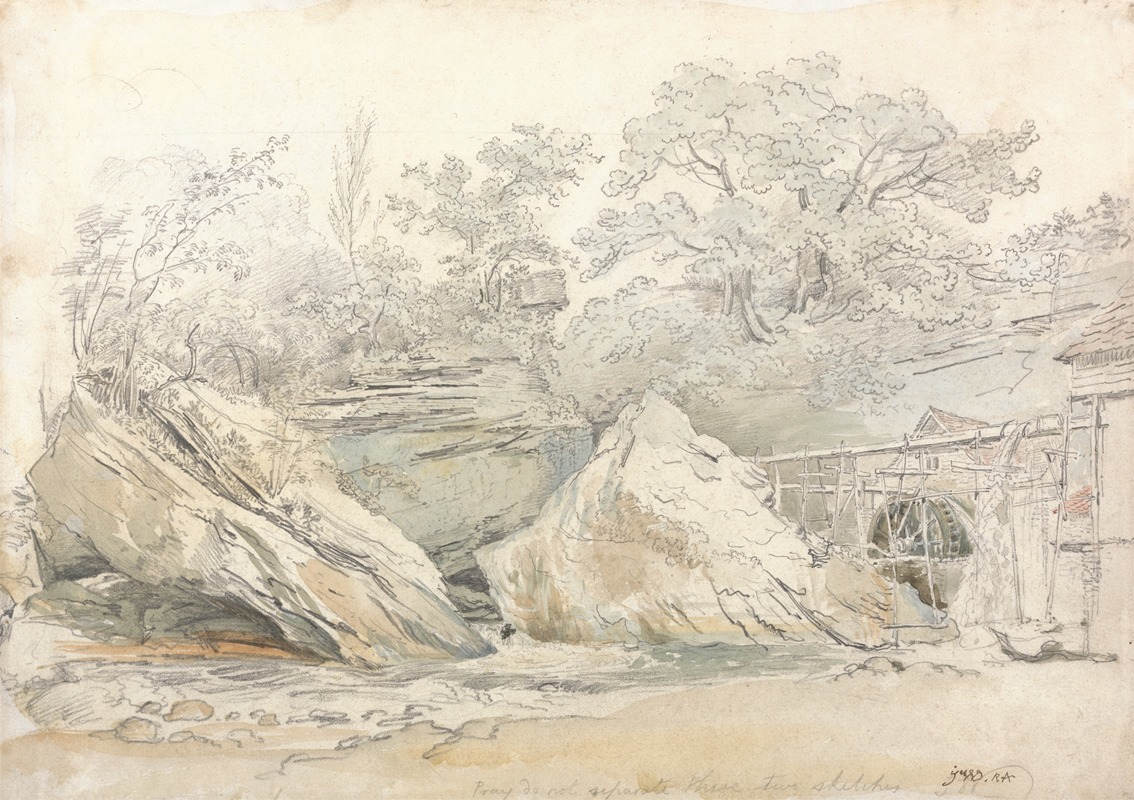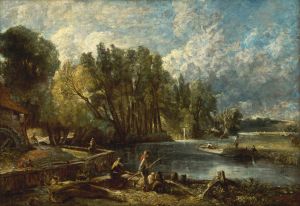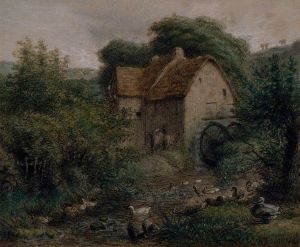
Aberdulais Mill, Glamorganshire
A hand-painted replica of James Ward’s masterpiece Aberdulais Mill, Glamorganshire, meticulously crafted by professional artists to capture the true essence of the original. Each piece is created with museum-quality canvas and rare mineral pigments, carefully painted by experienced artists with delicate brushstrokes and rich, layered colors to perfectly recreate the texture of the original artwork. Unlike machine-printed reproductions, this hand-painted version brings the painting to life, infused with the artist’s emotions and skill in every stroke. Whether for personal collection or home decoration, it instantly elevates the artistic atmosphere of any space.
James Ward's painting Aberdulais Mill, Glamorganshire is a notable work of art that captures the industrial and natural landscape of Aberdulais, a village in Glamorganshire (modern-day Neath Port Talbot, Wales). Created in the early 19th century, the painting reflects Ward's interest in combining elements of Romanticism with a detailed depiction of rural and industrial scenes.
James Ward (1769–1859) was a prominent British painter and engraver, known for his landscapes, animal studies, and portraits. He was a member of the Royal Academy and gained recognition for his ability to depict dramatic contrasts between light and shadow, as well as his attention to detail. His works often explored the relationship between humanity and nature, a theme that is evident in Aberdulais Mill, Glamorganshire.
The painting portrays Aberdulais Mill, a site historically significant for its industrial activity. Aberdulais has been a center of industry since the 16th century, with the mill originally used for copper smelting. By the 19th century, the site had transitioned to other industrial uses, including tinplate production. The mill was powered by the Aberdulais Falls, a dramatic waterfall on the River Dulais, which provided a reliable source of water energy. Ward's painting captures the interplay between the natural beauty of the falls and the industrial structures of the mill, reflecting the dual forces of nature and human innovation.
Ward's depiction of Aberdulais Mill is characterized by its Romantic sensibility, emphasizing the sublime power of nature alongside the ingenuity of human enterprise. The painting includes detailed renderings of the mill buildings, the cascading water of the falls, and the surrounding landscape. The composition highlights the dynamic energy of the scene, with the rushing water serving as a focal point.
Today, Aberdulais is a protected heritage site managed by the National Trust. While the original industrial structures no longer operate, the site remains an important historical and cultural landmark, attracting visitors interested in its industrial heritage and natural beauty. Ward's painting serves as a valuable historical record of the site during a period of significant industrial activity.
Aberdulais Mill, Glamorganshire exemplifies James Ward's skill in capturing the essence of a place and its historical context. The painting remains an important work within the broader canon of British landscape art, offering insight into the intersection of art, industry, and nature during the Industrial Revolution.

















